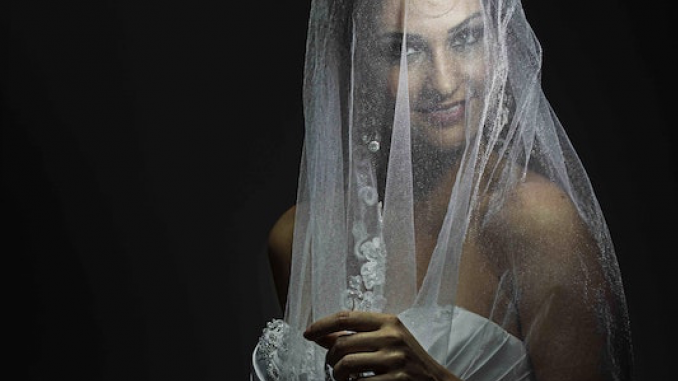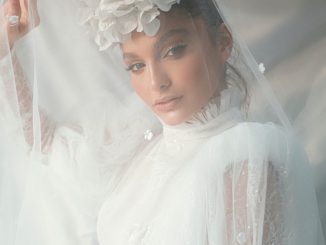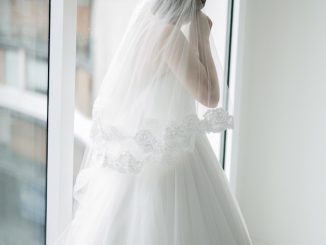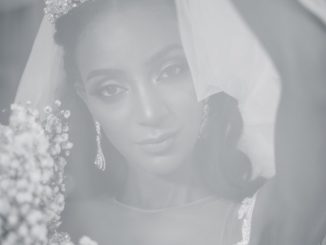
The blusher is the portion of the veil that is placed over the head to cover the bride’s face. This is the part of the veil that the groom lifts and throws back in order to kiss the bride. Today, the most common veil is a double tier, where the shorter tier is the blusher. Even if the bride chooses not to place the blusher over her face, she can still wear a double tier veil. This would be made of two pieces of the veil fabric cut in different lengths, such as elbow and fingertip length, or fingertip and cathedral length. A veil may also be single tier or triple tier depending on the look the bride wants.
Detachable Veils
While veils are lovely during the wedding ceremony, the may be difficult to manage during a reception. Food, candles, dancing, and dozens of pairs of feet may be more obstacles than a bride can navigate. Consider a detachable veil that can be removed after the formal wedding photos have been completed. Most veils can be attached to the headpiece with a strip of Velcro or snaps, and removed quickly when the bride is ready.
Veil Shapes
The shape of a veil influences how much fullness and gathering is required in joining it to the headpiece or base, and how full the bottom edge appears. Common veil shapes include:
The full oval, which is cut as a rectangle, with slightly rounded corners, and then gathered at the top edge. The sides fall smoothly, and this shape works when the veil is attached to the headpiece at the front rather than the back.
The half oval is cut like a rectangle, with two bottom corners are slightly rounded, and gathered at the top edge. This shape works well when the veil is attached to the back of the headpiece.
The rectangle is cut with 90 degree corners, and then gathered at the top edge. This shape works will when the veil drops directly from the back of the headpiece.
The teardrop is narrower at the top than at the lower edge, with top and bottom edges shaped like a semi-circle. This shape works well when used as a cathedral veil, but is not attractive when used with a pouf.
The circle is cut in a circular shape and gathered in the middle. This veil gives no appearance of an edge and is best for shoulder length veils. The standard size for a circle is 72-inches in diameter, which is the width of most bridal illusion and tulle. One side of a circle can be used as a blusher.
The pouf is simply gathered material at the top of the veil, used to add height and character to a headpiece. It is usually used with tiaras, crowns, pillbox hats, or other elaborate headpieces. A standard pouf may be up to eight inches high. Another option is a shorter, wider pouf that appears more like a halo. A bride might also choose to add several layers to her veil for a full effect around the face and head.
Veil Fabrics
Veils today are usually made from nylon netting called illusion or tulle. The fabric comes in width of 72 inches or 108 inches, and in a variety of colors and finishes. Some bridal illusion appears to have a shimmer, while others are completely matte. Other fabric choices include chiffon, silk illusion, or lace.
Veil Colors
There are three traditional veil colors. White is pure white in color, to match white satin, chiffon, cotton, or lace gowns. Winter white, diamond white, or silk white refer to a color that is between white and ivory, to match white silk, antique or vintage gowns that are not true white. Ivory is off-white with a yellowish tint, to match ivory satin, chiffon, cotton, or lace gowns. Most bridal illusion and tulle comes in a variety of colors, so even if the dress is fuschia, there should be veiling available to match.
Veil Edges
Veil edges can be plain, rolled, curly or scalloped. It can be left plain or covered with ribbon, pearls, crystals, lace, satin cord, or embroidery. You can also decorate the nylon veil with sequins, pearls, lace appliques, or crystals. The heavier the edging, the more the veil will be weighted down. For a fluffy look, it’s best to use not edging at all.



